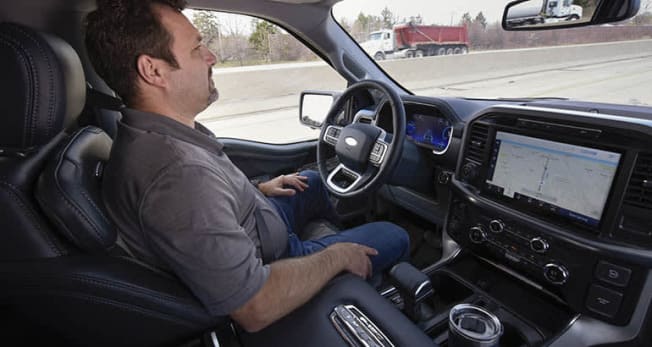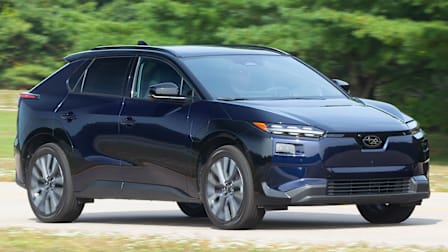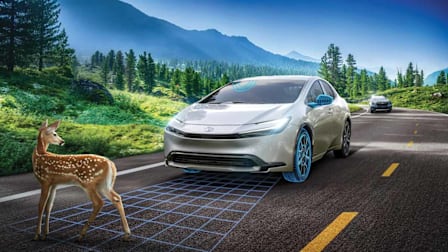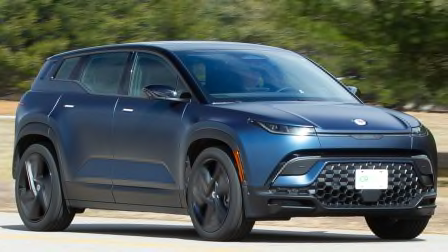Which Lane Keeping Assist System Is Right for You?
Consumer Reports explains the difference between intermittent and sustained lane keeping

Continuous advances among driver assist features means new-car shoppers are faced with an array of amazing-sounding systems, often billed as safety equipment. In particular, there are a range of lane-focused features to essentially help keep the car within lane lines. But between confusing names, different levels of intervention, and speed limitations, these systems teeter between being frustrating and helpful—based on our testing and the experience of CR members.
The brands that do lane keeping best are Tesla, Cadillac, Hyundai, and Volvo, according to a survey of CR members conducted last year, collecting data on experiences with more than 84,000 vehicles. Only vehicles known to have ADAS features were included in the survey, and participants were required to have used the features. Honda, Ford, Volkswagen, and Lincoln are at the bottom of the rankings for satisfaction with lane keeping assist.

Photo: Ford Photo: Ford
Intermittent lane keeping intervenes when the vehicle approaches or crosses a lane marker or road edge. This is often described as a safety feature. The system may be available only above a certain speed, making it hard to know when this feature is available. CR data shows that owners tend not to like these intermittent systems, partly due to unwanted intervention. Due to the unclear descriptions by the manufacturers, many drivers expect these systems to follow the lane rather than intervening only when straying out of the lane. Used this way, drivers report dissatisfaction with a system that seems to bounce back and forth in the lane like a ping-pong ball.
Sustained lane keeping continuously assists to keep the car at or near the center of the lane. These systems are often marketed as making driving less stressful. When combined with adaptive cruise control, these systems automate much of the driving task, but the driver still needs to monitor the roadway and be ready to intervene. Our surveys show that consumers tend to like the convenience of the sustained systems. But without adequate driver monitoring, it is easy to have too much confidence in the system and become distracted.
Take a look at the chart below to see examples of what different automakers call their lane systems. It’s not always apparent what they do by their name.
Should You Get a Car With a Lane System?
The latest CR car safety survey shows that most drivers are generally satisfied with the lane keeping system on their cars. They are particularly useful on highways, from two-lane roads up to multilane interstates. But lane keeping systems tend to be frustrating around town and on secondary roads, where it can be common to maneuver around pedestrians, cyclists, and other obstacles—and there is a need to move to or even over lane markings.
We consider sustained lane keeping systems to be potential stress reducers. They hold promise, but thus far, there are no proven safety benefits, and there are certainly some downsides. Ones that only intermittently intervene can be helpful on the highway if you drift out of your lane, but many choose to turn them off because of annoyances when driving around town.
CR encourages car buyers to get forward collision warning, automatic emergency braking, and blind spot warning—features that members feel have clear safety benefits. If you’re interested in lane keeping assist, you’re more likely to be satisfied with one that provides sustained lane keeping.
| Brand | Intermittent LKA | Sustained LKA |
| BMW/Mini | LDW Steering Intervention | Steering and Lane Guidance Assist; Congestion Assistance; Assisted Driving Mode (Steering and Traffic Jam Assistant) |
| General Motors (Buick, Cadillac, Chevrolet, GMC) | Lane Keep Assist | Super Cruise |
| Ford/Lincoln | Lane Keeping System | Co-Pilot360 [Assist] [Active]; Active Drive Assist; Adaptive Cruise Control with Lane Centering |
| Honda/Acura | Road Departure Mitigation | Lane Keeping Assist System (LKAS); Traffic Jam Assist |
| Hyundai/Kia/Genesis | Road Departure Mitigation | Lane Following Assist; Highway Driving Assist [II] |
| Land Rover/Jaguar | Lane Keep Assist | Steering Assist |
| Mazda | Lane Keep Assist System (LAS); Lane Departure Avoidance | Traffic Jam Assist |
| Mercedes-Benz | Active Lane Keeping Assist (uses braking) | Steering Pilot; Active Steering Assist |
| Nissan/Infiniti/Mitsubishi | Lane Departure Prevention (uses braking); Intelligent Lane Intervention | ProPilot Assist [Steering Assist] |
| Porsche | Lane Keeping Aid | Active Lane Keeping |
| Stellantis (Alfa Romeo, Chrysler, Dodge, Fiat, Jeep, Maserati, Ram) | Active Lane Management; Lane Keeping Assist; LaneSense | Active Driving Assist; Highway Assist System |
| Subaru | Lane Keeping Assist; Lane Departure Prevention Function | Lane Centering Function |
| Tesla | Lane Keeping; Lane Departure Avoidance | Auto Steer; Autopilot |
| Toyota/Lexus | LDW with Steering Assist; Road Edge Detection | Lane Tracing Assist (LTA) [Lane Center] [Steering Assist] |
| Volvo/Polestar | Lane Keeping Aid | Pilot Assist; Driver Assist |
| Volkswagen/Audi | Lane Keeping; Lane Assist | Lane Tracing; Active Lane Assist; Adaptive Cruise Assist; Travel Assist; Traffic Jam Assist |




















